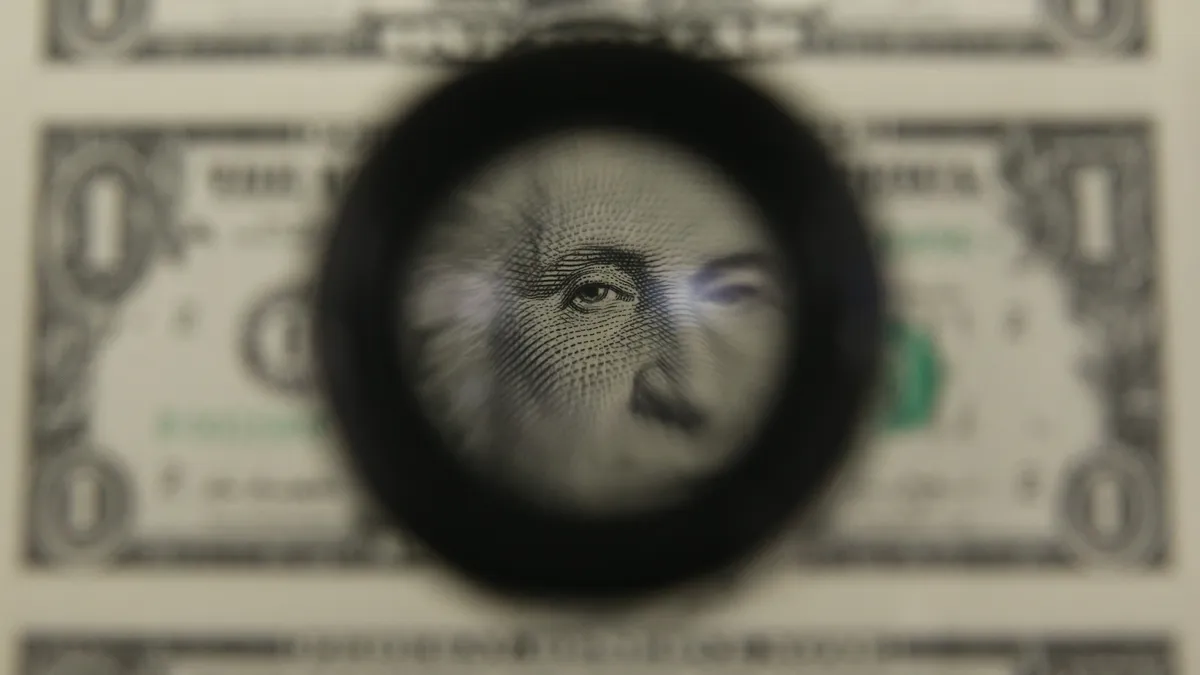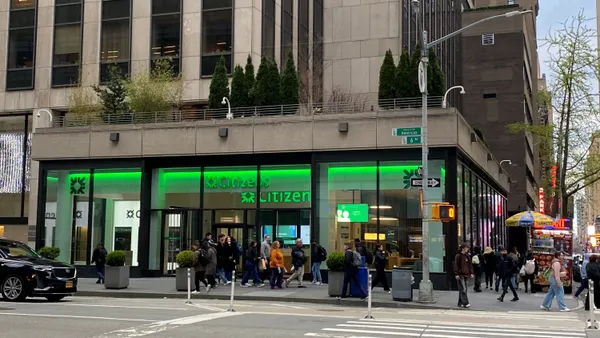Dive Brief:
- Mobile banking was already the most popular method for American consumers to interact with their bank accounts before the COVID-19 pandemic struck. But since March 2020, the proportion of customers using mobile platforms has jumped 11 percentage points, the American Bankers Association (ABA) found Monday in a survey conducted by Morning Consult.
- The proportion of customers for whom in-branch visits were the top option for banking fell by the same margin — 11 percentage points — in the same time frame, the survey found. About 10% of users preferred to visit a brick-and-mortar location post-COVID, compared with 21% before, according to the ABA.
- Online banking with a laptop or personal computer ranked second both pre- and post-COVID, with 24% of respondents preferring that method before the pandemic, and 26% since, according to the survey.
Dive Insight:
The ABA survey found 33% of bank customers said mobile apps were their preferred banking channel before the pandemic, compared with 44% since.
“Digital banking was on the rise long before COVID-19, but the growth in mobile app use accelerated as the pandemic made in-person banking more challenging,” Rob Morgan, the ABA’s senior vice president of innovation strategy, said in a press release. “Today’s banking apps are extremely sophisticated, and this survey shows that many consumers who try them quickly make mobile their banking method of choice.”
Banks have poured resources into their mobile apps. Wells Fargo is planning to roll out a revamped app next year, followed by a virtual assistant.
Over the past year, JPMorgan Chase has reported 10.2% user growth among active mobile users over the past year. For Wells, that figure is 4.2%, while Bank of America reported a 6.2% increase, according to CNBC. Customer interactions through Bank of America’s virtual assistant, Erica, have tripled in the past year to 104.6 million, the Charlotte, North Carolina-based bank reported in its earnings this month.
The ABA/Morning Consult research found spotlighted differences in banking activity across several generations.
Mobile banking was the clear favorite method for Gen Z, millennials and Gen X in 2021, garnering 56%, 55% and 51% of the vote, respectively. For each of these three generations the runner-up was online banking, which is favored by 14% of Gen Z, 15% of millennials and 21% of Gen X.
Baby boomers were the only generation in the study that did not favor mobile banking, instead choosing most often to bank on the computer. Amid the pandemic, 38% of baby boomers prefer to bank online, while 29% opt for mobile banking.
However, mobile banking still jumped by 9 percentage points among the cohort of Americans born between 1946 and 1964. One in five baby boomers (20%) preferred to use mobile banking at the start of the pandemic.
Branch banking is on the downtrend across all generations. And banks are likewise trimming their brick-and-mortar footprint. Banks closed 3,164 branches but opened 1,500 others in fiscal 2019 for a net loss of 1,664, according to a report by commercial real estate company JLL. Net branch closures in 2020 increased to 2,284, The Financial Brand reported in March, citing S&P Global data.
Research released by NerdWallet in August found that Google search volume for the term “mobile banking” reached a zenith in April 2020, when many Americans were looking for somewhere digital to store their first coronavirus stimulus check.
The NerdWallet study found a surge in search traffic for fintechs like Chime, Green Dot, Venmo and Square's Cash App, while search volume for legacy institutions like Bank of America, Wells Fargo and Citi declined.
“Interest in mobile banking and mobile-first financial providers was bound to increase over time,” said Chanelle Bessette, a NerdWallet banking specialist. “The pandemic just encouraged people to reevaluate their money management much faster than they otherwise might have."
For the survey, Morning Consult polled 2,201 American adults in digital interviews between Oct. 1 and Oct. 5.












